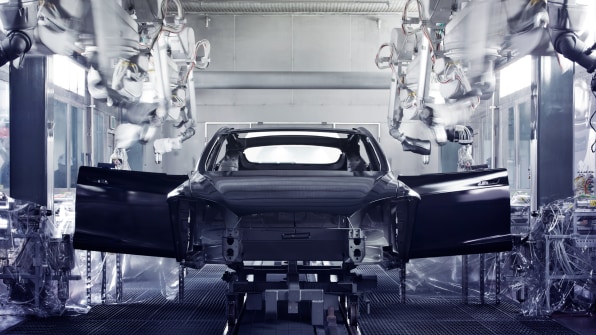
[ad_1]
It’s been a tough year for Tesla. With the U.S. Securities and Exchange Commission’s investigation behind it, the electric carmaker is ready to tout its production strides. Tesla announced today that it produced 55,239 Model 3 cars this quarter, meeting its self-assigned benchmark. Now investors are waiting to see if the company can meet its other third-quarter goal: profitability.
In total, the company produced 80,142 cars across all models. It delivered 83,500 cars total, slightly more than it produced. These figures were also in keeping with the company’s projections. But Tesla has failed to meet another goal it set for itself: It had wanted to produce 5,000 Model 3 vehicles per week on a consistent basis. Hitting this metric is supposedly a key step to getting the company profitable, and while Tesla did produce a little over 5,000 Model 3 cars one week in June—proving its facilities are capable—the company seems to be struggling with other components of the manufacturing process.
Where Tesla was in “production hell” a year ago, it is now in “delivery logistics hell,” according to Musk.

In other words, Tesla has figured out how to rally workers to meet production deadlines, but it seems the company is struggling to get them to customers. Irate Tesla consumers are posting on social media about infinite delays and delivery dates that keep moving. Meanwhile, the New York Times reports, Tesla appears to have huge lots full of undelivered cars. Tesla can’t record sales until cars are delivered, so these logistical problems could hinder revenue for the quarter.
In tweets, Musk has attributed some of the issue with delivery to a shortage of car carriers. But he also says Tesla is making its own car carriers to meet demand.
That’s a strange solution for a company that seems to be running out of money. The company historically spends about $1 billion of its free cash flow every quarter. It lowered that figure last quarter and revised its capital expenditures forecast for the full year to below $2.5 billion, but Tesla ended last quarter with roughly $3 billion in accounts payable. It also had $2.2 billion in cash, $942 million of which were customer deposits.
The deposits have helped to keep the company from having to raise new funding, but that may no longer be enough. Tesla has $11.6 billion in debt, the bulk of which reaches maturity over the next three years. In early September, a report from Goldman Sachs said it expects Tesla to have to raise money on the capital markets in the first half of 2019. Last quarter, Musk said, he has no plans to do an equity raise.
It is increasingly difficult to make sense of Tesla’s math. To clear up the confusion, investors will be looking for Tesla to reach reliable profitability at the end of the month. In an email over the weekend, he told employees, “We are very close to achieving profitability and proving the naysayers wrong.”
[ad_2]
Source link